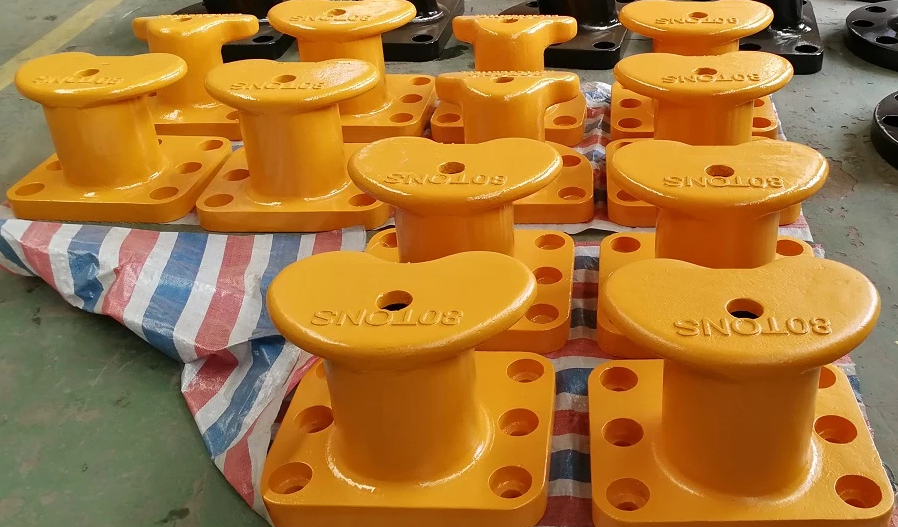
Marine bollards, also known as mooring bollards, are highly stable and provide secured tie-up points for mooring lines. They are simple and cost-effective measures in achieving mooring requirements such as anchoring vessels safely alongside jetties/quay, berths, wharves and dolphins in ports and harbors.
ESC Marine Systems provides bollards in a range of design profiles, sizes, and mooring line capacities to suit all mooring system applications. ESC engineers also assist its clients in determining all the dimensional requirements and discuss suggestions in order to guarantee the mooring processes are safe.
Design wise, mooring bollard should have a thicker diameter at the top (head / tip of the structure) to prevent mooring lines to escape accidentally. It is important to provide a solid anchor point for mooring ropes. Certain designs have double bollards for ropes to be cross-fastened. Such an arrangement would provide a tighter connection. Single and double designs are both available in the market today.
Some of the most commonly used bollard designs today are the T-Head, T-Horn, Kidney, Cleat, Double Bitt, Single Bitt and Pillar.


“Tee Bollard”, “T-bollard”, or T- head bollard has a top shaped like a “T”. It is very prominent in many regions of the world due to its simplicity and it gets the job done well up to 300 tonnes. T-head bollards along with Horn Bollard or “Staghorn Bollard” can handle higher line load angles than single bitt and kidney shaped bollards.

Kidney-shaped Bollard has a simple design that is suitable when low to medium tidal range is expected. Kidney shaped bollards offer an economical solution for installations where securing of mooring lines at high angles is not a concern. This style is not recommended when multiple mooring lines will share one bollard as there may be a possibility of an unintentional release due to the shallow lip at the top of the bollard.

Cleats are simple type of bollards used for smaller vessels. With a mooring line capacity range from 5 tonnes to 35 tonnes, Cleat Bollards suit marine mooring applications for light commercial use or recreational marina use as well as mounting on vessels.

Double Bitt Bollard, some call it the “Twin Horn” or “Twin”. Small base area is space-saving for small areas. They are useful when high densities of mooring lines are present, this is a better choice for ship mooring and shifting.

Single Bitt Bollard also known as “US Style Pillar Bollards” are particularly suitable for applications where tidal range variations are large and can handle steep mooring line angles. They are capable of accepting multiple mooring lines and have been designed to fit onto existing bolt patterns for older US-Style pillar bollards.

Pillar Bollards are normally applicable where tidal ranges are small and use for warping operations along berths where vessels need to be re-positioned for loading purposes. Due to their 360 degree line of load range, they can also be placed on jetties where vessels berth on both sides of the jetty structure. Pillar Bollards can withstand use in harsh environments.
Criterion for selecting mooring bollards are based on mooring pattern, changes in draft due to loading and discharge, wind and current forces, swell, wave and tidal forces, mooring line types, size and angles ice forces (where relevant). Ductile iron, cast steel, and stainless steel are some of the main materials used to make marine bollards. Besides size & design, bollards are also categorized by their grade and mooring capacities.

Furthermore, durability is a factor when choosing a suitable bollard design as maintenance is something that end user should be considered. To spot possible deterioration and to ensure that bollards are working well a continual durability testing and inspection should be done to ensure mechanical performance are maintained.
Should you require our expertise, please email us at info@escmarinesystems.com or visit our website www.escmarinesystems.com for more information.
